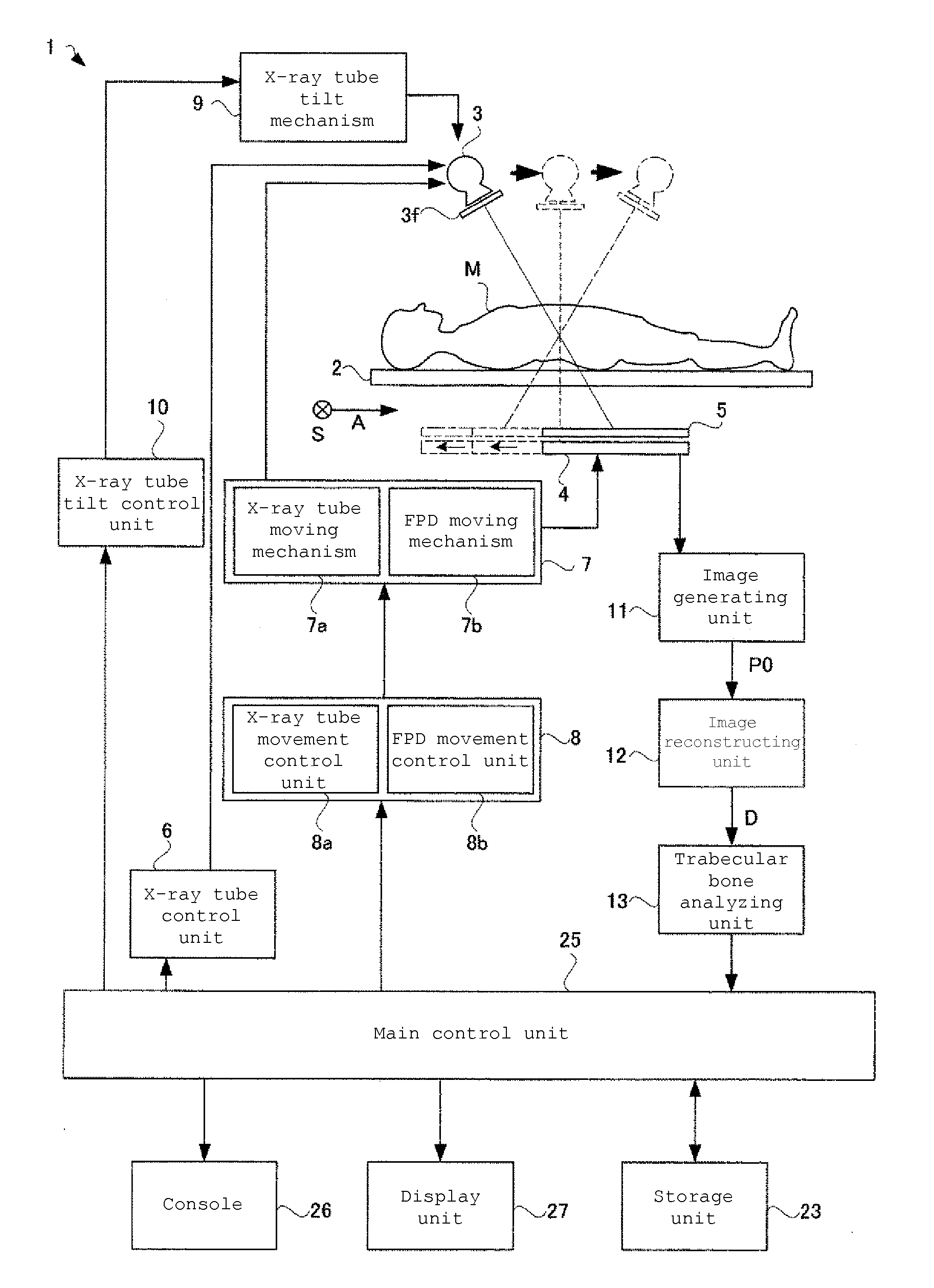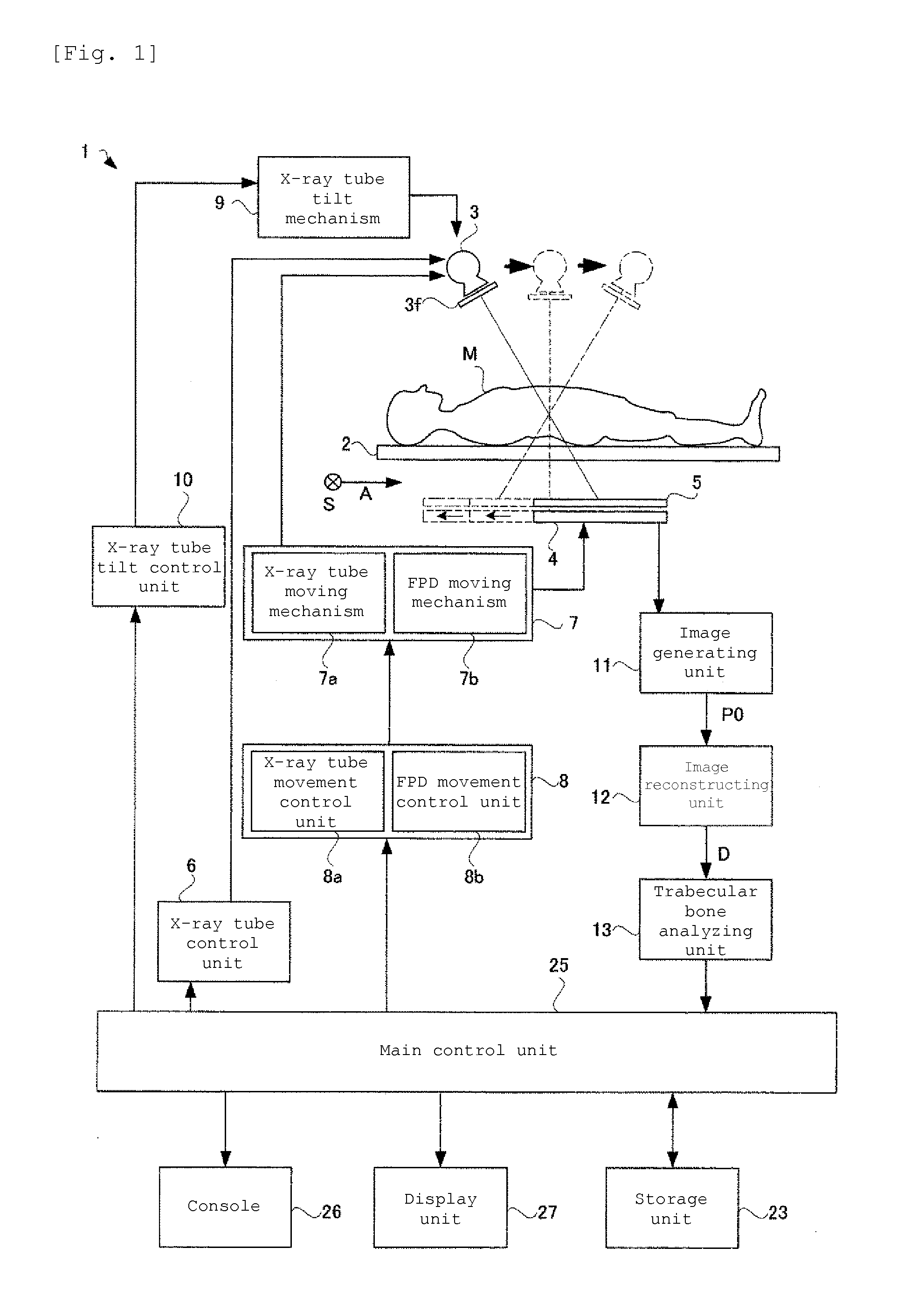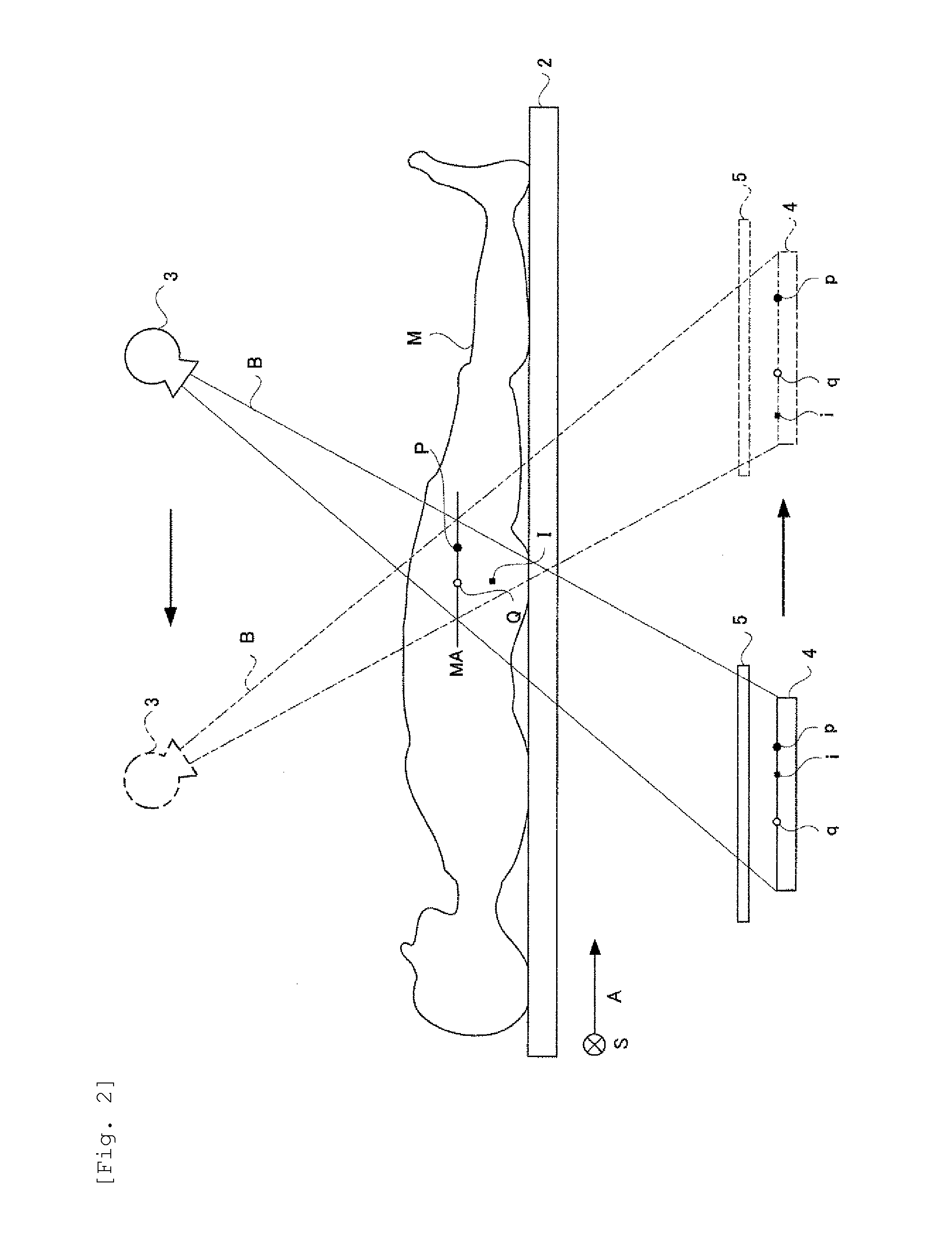Trabecular bone analyzer
a trabecular bone and analyzer technology, applied in the field of trabecular bone analyzers, can solve the problems of inability to accurately quantify trabecular bone, inferior resolution of acquired tomographic images to fluoroscopic images, etc., to achieve accurate results, accurate quantification of trabecular bone, and high resolution
- Summary
- Abstract
- Description
- Claims
- Application Information
AI Technical Summary
Benefits of technology
Problems solved by technology
Method used
Image
Examples
example 1
[0042]Hereinbelow, examples of a trabecular bone analyzer according to embodiments of the present invention will be described with reference to the accompanying drawings. It is to be noted that X-rays in the embodiments correspond to one example of radiation in the present invention. It is to be noted that FPD is an abbreviation for flat panel detector (such as a flat panel X-ray detector).
[0043]FIG. 1 is a functional block diagram illustrating the configuration of a trabecular bone analyzer according to Example 1. As shown in FIG. 1, the trabecular bone analyzer 1 according to Example 1 includes: a top board 2 on which a subject M as a target for X-ray tomography is to be placed; an X-ray tube 3 provided above the top board 2 (on one surface side of the top board 2) to irradiate the subject M with a cone-shaped X-ray beam; an FPD 4 provided blow the top board 2 (on the other surface side of the top board) to detect an X-ray fluoroscopic image of the subject M; a synchronous moving ...
example 2
[0081]Hereinbelow, a trabecular bone analyzer according to Example 2 will be described. As shown in FIG. 7, the trabecular bone analyzer according to Example 2 is configured so that a tomographic image can be taken by moving an X-ray tube 3 and an FPD 4 in the direction of a body axis A of a subject M with their positional relationship being maintained. Asynchronous moving mechanism 7 moves the X-ray tube 3 and the FPD 4 synchronously so that the X-ray tube 3 moves toward one end of a top board 2 in the longitudinal direction of the top board 2 and the FPD 4 moves toward one end of the top board 2 in the longitudinal direction of the top board 2.
[0082]The configuration of the X-ray radiographic device according to Example 2 is the same as that shown in the functional block diagram of FIG. 1. The configuration of Example 2 is different from that of Example 1 shown in FIG. 1 in that the FPD 4 moves while following the X-ray tube 3 (see FIG. 7) and the X-ray tube 3 does not tilt. There...
PUM
 Login to View More
Login to View More Abstract
Description
Claims
Application Information
 Login to View More
Login to View More - R&D
- Intellectual Property
- Life Sciences
- Materials
- Tech Scout
- Unparalleled Data Quality
- Higher Quality Content
- 60% Fewer Hallucinations
Browse by: Latest US Patents, China's latest patents, Technical Efficacy Thesaurus, Application Domain, Technology Topic, Popular Technical Reports.
© 2025 PatSnap. All rights reserved.Legal|Privacy policy|Modern Slavery Act Transparency Statement|Sitemap|About US| Contact US: help@patsnap.com



